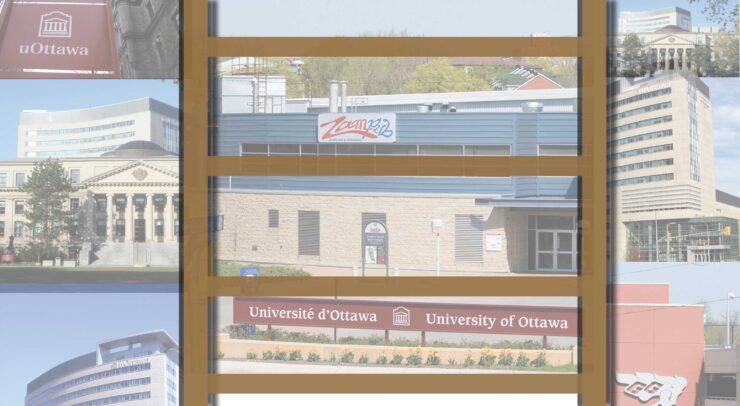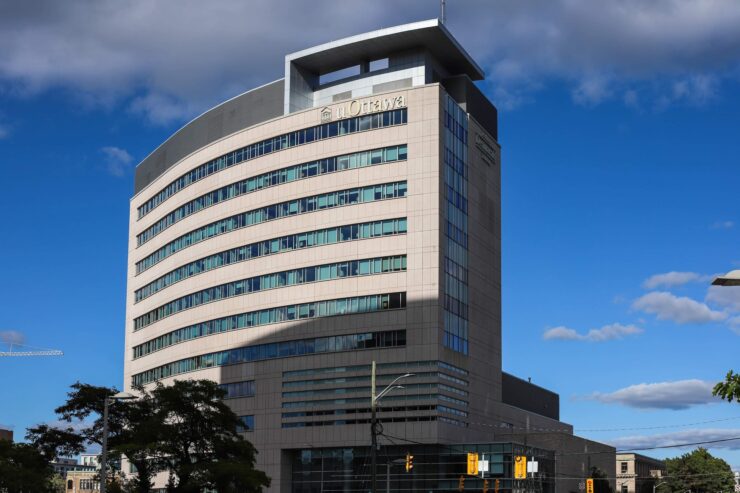Canadian system characterized by precarity and lack of support
With the rise of populist politics and a growing anti-globalization angst, immigration has become a hot-button issue once again. The Fulcrum spoke with two University of Ottawa experts to separate fact from fiction when it comes to immigration policy, economics, and integration in the Great White North.
What does our immigration system look like?
First of all, Canada’s immigration system can be divided into two main categories: Permanent residents, which include economic, family and refugee classes, and temporary workers. Visas are granted depending on which category individuals fit under, and the federal government uses a points system to assess potential immigrants for certain types of visas.
Policy is concentrated at the federal level, except for the province of Quebec. Therefore, immigrants who want to move to Quebec have to apply to that province directly.
According to Luisa Veronis, a professor in the department of geography, environment, and geomatics at the U of O, immigration has served two main purposes in Canada: population growth and economic development.
“In terms of immigration policy, it’s become increasingly selective,” said Veronis. “Things have changed last year due to the Syrian refugee situation, but up to last year the number of refugees that were admitted in Canada had been declining.”
In recent years Canada has decreased the number of family reunification visas, and increased the number of visas for skilled workers and temporary foreign workers.
Veronis believes this selectiveness is a problem, because it allows for a gendered and race dimension of immigration. For example, the majority of women who enter Canada come under family reunification visas, which are less prioritized than visas for highly skilled workers.
“Canada’s immigration policy is no longer racist the way it was before 1967 when the so-called points system was implemented,” said Veronis. “Nevertheless, you have to pay a fee of $1,500 to apply, so not everyone can come to Canada. It’s selective in that sense.”
This selective vetting process is constantly on the mind of David Moffette, a professor in the department of criminology at the U of O.
“There’s been in the last, probably 12 years, a decrease of permanent landed immigrant visas from the get-go,” said Moffette, who correlates this decrease to an increase in temporary workers, such as seasonal agricultural workers and live-in caregivers under the Federal Skilled Workers Program.
Those who come to Canada as temporary workers are usually here for a few years, but a select few can then apply for permanent residency.
However, while the federal government prioritizes skilled workers, there is a lack of support for professionals when they arrive, and their credentials often go unrecognized. The process to get their credentials recognized is lengthy, and they often can’t afford to go back to school right away.
“Well one doesn’t contradict the other. You can want to attract professionals, (but) it doesn’t mean they’ll find a job,” said Veronis. “The federal government thinks we need skilled workers, now what happens when they’re here is not the problem of the federal government.”
Precarious work
Even when they manage to wade through all this bureaucratic red tape, immigrants who enter Canada often face uncertain circumstances.
“I’m assuming that the government thinks that what they want is workers and not immigrants,” said Moffette. “I think that the consequences is that there are more and more people in precarious immigration status.”
One major issue is that temporary workers are dependent on their employers for more than their wages.
“If they lose their job, they lose their possibility of applying for permanent residency,” explains Moffette. This dynamic puts people at risk of abusive work environments and human rights violations.
In late 2016, the Trudeau government announced that they would be doing away with the four-year limit for temporary foreign workers. The previous rule stated that temporary foreign workers could only work in Canada for four years, and couldn’t re-apply until they’ve lived abroad for four years.
However, after scrapping this rule, the Liberal government did not articulate a clear path to citizenship for temporary foreign workers, so chances are they will continue to work in unsettling circumstances.
“Immigration is about growing roots, and in order to be able to do that … you need to know that you’ll be able to stay,” said Moffette. “I think temporary permits prevent integration. People aren’t going to really start building networks … if they know they can’t stay.”
Settlement and integration
While the government generally doesn’t directly provide settlement services, it does provide funding for NGOs and para-governmental organizations. Funding is split between federal and provincial governments and services are developed across all sorts of sectors.
“Over time there’s been a reduction of settlement services that are culturally and linguistically sensitive to people’s needs,” said Veronis.
Once again, skilled workers are the main focus when it comes to services. This means “that people who came under family reunification, particularly spouses, have less access to services which may lead to things like isolation and so on and so forth,” said Veronis.
In addition, while municipal governments don’t get to participate in the development of immigration policy, they often provide most of the services. This can lead to disagreements between levels of government in dealing with immigration, especially when it comes to issues like sanctuary cities.
Another set of hurdles for integration includes negative stereotypes, and the rise of racist politics.
“This has real consequences,” according to Moffette.
“I think it normalizes hate, it normalizes racism, it transcribes it into a language that it’s not about racism it’s about equality, it’s about getting what you deserve, it’s about not having your stuff stolen from you, it’s about defending Canadian values,” he said.
“But by doing that, you’re saying immigrants don’t have Canadian values.”





